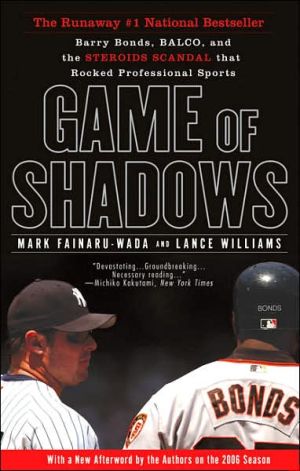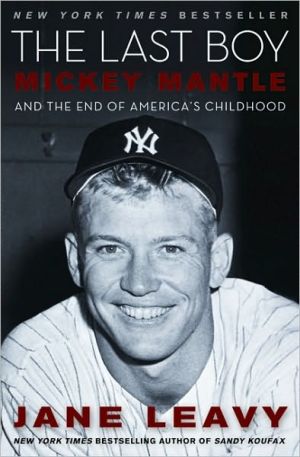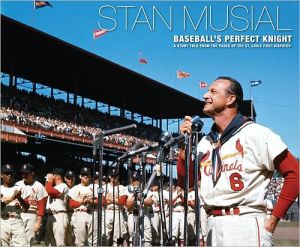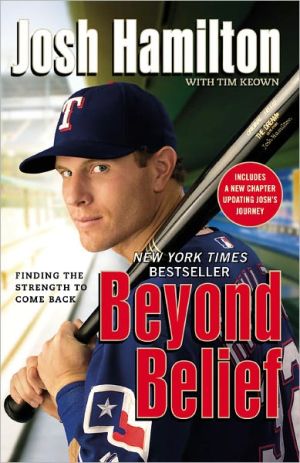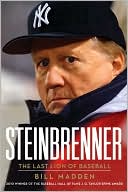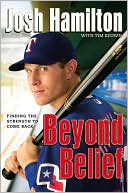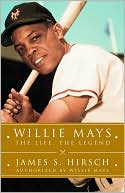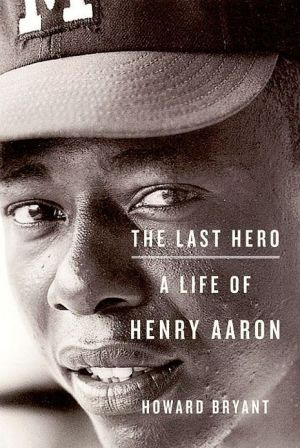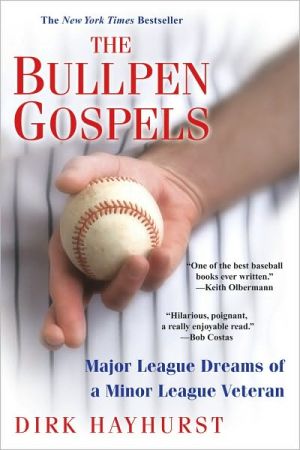Game of Shadows: Barry Bonds, BALCO, and the Steroids Scandal That Rocked Professional Sports
In the summer of 1998 two of baseball leading sluggers, Mark McGwire and Sammy Sosa, embarked on a race to break Babe Ruth’s single season home run record. The nation was transfixed as Sosa went on to hit 66 home runs, and McGwire 70. Three years later, San Francisco Giants All-Star Barry Bonds surpassed McGwire by 3 home runs in the midst of what was perhaps the greatest offensive display in baseball history. Over the next three seasons, as Bonds regularly launched mammoth shots into the San...
Search in google:
The complete inside story of the shocking steroids scandal that turned the sports world upside down…For years, in the shadowy reaches of the world of sports, there were rumors that some of our nation’s greatest athletes were using steroids, human growth hormone, and other drugs to run faster, jump higher, and hit harder. But as track stars blazed their way to Olympic medals and sluggers brought fans back to baseball, sports officials, the media, and fans looked past the rumors and cheered on the athletes to ever-higher levels of performance. Then, in December 2004, San Francisco Chronicle reporters Mark Fainaru-Wada and Lance Williams broke the story of the Bay Area Laboratory Co-Operative, a tiny nutritional supplement company that, according to sworn testimony, was supplying elite athletes with banned drugs. The stories shocked the nation and the exposés led to congressional hearings on baseball's drug problems and a revived effort to purge the U.S. Olympic... The New York Times - Michiko Kakutani Although Game of Shadows reprises much of the information contained in the authors' San Francisco Chronicle articles and raises many of the same issues that Howard Bryant's impressive 2005 book, Juicing the Game, did, it remains necessary reading for anyone concerned with the steroids era in baseball and track and field and its fallout on sports history.
Game of Shadows\ \ By Mark Fainaru-Wada Lance Williams \ Gotham Books\ Copyright © 2006 Mark Fainaru-Wada and Lance Williams\ All right reserved.\ ISBN: 1-592-40199-6 \ \ \ Prologue\ On May 22, 1998, the San Francisco Giants arrived in St. Louis for a three-game series with the Cardinals. That weekend, Giants All-Star left fielder Barry Bonds got a firsthand look at the frenzied excitement surrounding Mark McGwire, baseball's emerging Home Run King. \ Bonds had recently remarried, but on this trip he was accompanied by his girlfriend, Kimberly Bell, a slender, attractive woman with long brown hair and green eyes whom he had met four years earlier in the players' parking lot at Candlestick Park. Bell had been looking forward to the trip, and it was pleasant in many ways-a big hotel room with a view of St. Louis's famous arch; a wonderful seat eight rows behind home plate; and even tornado warnings, which were exotic to a California girl. But Bonds was sulky and brooding. A three-time winner of the National League Most Valuable Player award, he was one of the most prideful stars in baseball. All that weekend, though, he was overshadowed by McGwire.\ Even by the standards of the modern game, the Cardinals' first baseman was a player of exceptional size and power. That summer the 6-foot-5 McGwire weighed 260 muscular pounds and was hitting balls that traveled in long, soaring arcs. The season was less than two months old, but healready had hit 20 home runs. McGwire's pace was ahead of Babe Ruth's when he hit 60 home runs in 1927, and also ahead of Roger Maris's when he hit 61 to break Ruth's record in 1961. Players, fans, and the media were already anticipating that McGwire could break baseball's most storied record, and the noisy attention he received as a result was impossible to ignore.\ Before Friday night's game, even the Giants' coaches acted like fans, gathering behind the batting cage and watching as McGwire hit 10 batting practice pitches into the stands. During the game itself, McGwire crushed a home run into an area of Busch Stadium's upper deck called "Big Mac Land." The home run entitled everyone in the sellout crowd of 43,000 to a free hamburger. For the Giants, Bonds went 1 for 4 with a double. The Cardinals won 4-3.\ On Saturday night, McGwire singled in the first inning and scored from second when Bonds made a poor throw on a hit to left field. Then McGwire hit two more home runs, the second one bouncing off the Chevrolet sign on the left-field scoreboard. The Cards won 11-10.\ On Sunday, Bonds himself hit a dramatic two-run homer, his 11th of the season, to tie the game in the 9th inning. But in the 12th, after the Giants had pulled ahead 6-4, McGwire hit an equally dramatic shot to tie the game again. It was his fourth home run of the series, and his 24th of the young season. The Giants finally won in 17, but Bonds's mood remained irretrievably foul.\ On that trip, Bonds began making racial remarks about McGwire to Kimberly Bell. According to Bell, he would repeat them throughout the summer, as McGwire and Sammy Sosa, the buffed, fan-friendly Chicago Cubs slugger who also was hitting home runs at an amazing rate, became the talk of the nation.\ "They're just letting him do it because he's a white boy," Bonds said of McGwire and his chase of Maris's record. The pursuit by Sosa, a Latin player from the Dominican Republic, was entertaining but doomed, Bonds declared. As a matter of policy, "They'll never let him win," he said.\ As he sometimes did when he was in a particularly bleak mood, Bonds was channeling racial attitudes picked up from his father, the former Giants' star Bobby Bonds, and his godfather, the great Willie Mays, both African-American ballplayers who had experienced virulent racism while starting their professional careers in the Jim Crow South. Barry Bonds himself had never seen anything remotely like that: He had grown up in an affluent white suburb on the San Francisco Peninsula, and his best boyhood friend, his first wife, and his present girlfriend all were white. When Bonds railed about McGwire, he didn't articulate who "they" were, or how the supposed conspiracy to rig the home run record was being carried out. But his brooding anger was real enough, and it continued throughout a year in which he batted .303, hit 37 home runs, made the All-Star team for the eighth time, and was almost completely ignored. For, as the 1998 season unfolded, the attention of all baseball focused on McGwire's home run chase and on his gentlemanly rivalry with Sosa. The quest to hit 61 home runs transfixed even casual fans, in the way that a great pennant race used to do in the old days.\ Something about McGwire's appearance-the red hair and the freckled, craggy face that sometimes burst into a winning smile-seemed to invite affectionate hyperbole. The sportswriters who covered him wrote that McGwire had Popeye's forearms and shoulders as broad as Paul Bunyan's. The nature of his quest also was expressed in hyperbolic terms. McGwire's home run chase was "a metaphor for the best in America," a newspaper editor told an Iowa professor who was studying the chase as a cultural phenomenon. It was more significant than "the ascent on Mt. Everest," as San Francisco Giants' marketing man Pat Gallagher proclaimed. And from acting baseball commissioner Bud Selig down to its ordinary fans-anybody who cared about the game and worried about its future-all agreed that McGwire's pursuit of the home run record was hugely important. It had made watching the sport of baseball enjoyable again, for the first time in quite a while.\ Baseball's fans are among the most forgiving in all sports, but the toxic relations between team owners and the players union had put the fans' patience to the test for a generation. From 1971 through 1990, seven baseball seasons had been interrupted by labor disputes. The eighth interruption, which began in August 1994, lasted 234 days and led to the cancellation of the World Series for the only time since World War I. It also nearly killed the game.\ As always, both the union and the owners claimed the dispute was about baseball's future. Actually, it was just another fight about money. For fans, the dispute was dispiriting and pointless, an argument between millionaires and billionaires.\ The owners finally reopened the ballparks, and the players slunk back into them two weeks after the 1995 season had been scheduled to start. In park after park they were greeted with a cascade of boos. Many fans just stayed away. Attendance in 1995 was down 28 percent, nearly 20 million, from 1993, the last pre-strike season. It crept back in the following seasons, but in 1997, attendance was still down 10 percent, or more than 7 million fans, from the pre-strike high. By some estimates the lockout had cost the owners $500 million in lost revenues in 1994, and $800 million more in 1995. More worrisome still were the many signs that interest in the game might have permanently ebbed.\ Then, in 1998, McGwire's assault on Maris's record brought the fans back to baseball in droves. The Cardinals' home attendance, which had languished since the lockout, would top 3.1 million, a club record, and other National League clubs saw big gains as well. For fans, McGwire's escalating home run totals became a daily reminder of the game's underlying drama and intensity-and its history, for the ghost of Ruth hovered about all summer long. And if McGwire's chase of the home run record evoked baseball's past, Sosa was a charming connection to its future, one of a stream of talented Latin players who were flooding into the game. Fans were drawn to Sosa, McGwire's friendly rival, and the complex ritual he went through each time he crossed home plate after a homer, including the blown kiss and the tap of his heart to honor his mother.\ By mid-summer the home run chase took on a traveling circus atmosphere. One night in Phoenix, 25,000 people showed up to watch McGwire take his hacks in batting practice, while a TV station provided pitch-by-pitch commentary and the scoreboard registered the distance of each practice home run. A media pack worthy of a presidential candidate on election night tailed McGwire across the country, recording his every word and action.\ In August, when McGwire had already hit 43 bombs, a veteran Associated Press writer named Steve Wilstein stopped by the big Cardinal's locker in Busch Stadium. As he waited for McGwire to emerge from the shower, Wilstein noted items in plain view on a locker shelf: a photo of McGwire with his 10-year-old son; a can of Popeye-brand Spinach; a bottle of a product called androstenedione. Wilstein assumed it was some sort of vitamin.\ But Andro was more than that. The product was a testosterone booster marketed by Patrick Arnold, a renegade chemist who was pioneering the development of steroids that would be undetectable by the most sophisticated laboratory tests. Andro was legal. But it had been banned by the International Olympic Committee, the National Collegiate Athletic Association, and the National Football League. Olympic doping experts told Wilstein that Andro had the same muscle-building effects as anabolic steroids, which Congress had outlawed in 1991. Andro was a steroid by another name. In the Olympics, using Andro was considered cheating. Users who got caught were banned.\ Baseball, however, had no rules against steroid use, and a different attitude about cheating. From corking bats to doctoring balls to hiding a coach with binoculars in the scoreboard to steal signs, the impulse to cut corners was almost as old as the game itself. Players did what they could to get an edge, without shame or serious consequence. Performance-enhancing drugs had become another way to accomplish that. For decades, the game's drug of choice was not steroids but "greenies," or amphetamines, which were popped by players seeking to kick their performance up a notch, hoping to overcome fatigue, aches and pains, hangovers, even boredom.\ Perhaps because of the sport's antipathy to weight lifting, steroids were slow to catch on. For much of the game's history, players were discouraged from pumping iron, lest they lose the flexibility and quick wrists needed to get around on the pitched ball.\ That began to change in the mid-to-late 1980s. By his own account, the Typhoid Mary of steroid use in the big leagues was the Cuban slugger Jose Canseco, the first player to hit 40 home runs and steal 40 bases in the same season. Canseco also was McGwire's teammate on the dominating Oakland Athletics clubs of the 1980s. In 2005, out of baseball, financially strapped, and on probation for assault, Canseco would write a confessional memoir, claiming to have "single handedly changed the game of baseball" by popularizing weight training and performance-enhancing drugs. Canseco said his own career proved that strength conditioning, when combined with steroids and human growth hormone, translated into a higher batting average and more power. He claimed that the drugs could transform a good player into a great one. After his Rookie of the Year season in 1985, when he hit 33 home runs, Canseco claimed other players began to emulate him, and weight training and juicing swept the game.\ In the book's most enduring image, Canseco described going into the bathroom at the Oakland Coliseum with McGwire before A's games. There, he wrote, the two sluggers would inject themselves with the steroid Deca-Durabolin, then take the field.\ But in 1998, Canseco's disclosures about his famous teammate were far in the unanticipated future. And in 1998, McGwire had been caught only with Andro, not with Growth or Deca. Still, the AP's revelation that McGwire was using a drug that would have gotten him banned from the Olympic Games pushed its way into the headlines. Many in baseball's establishment reacted with outrage-not at McGwire, but at Wilstein, the writer who broke the story.\ Leading the attack was Tony La Russa, the Cardinals' tightly wound manager. He lashed out at the media, agitating to ban the Associated Press from the Cards' clubhouse on the spurious grounds that Wilstein had violated an unwritten baseball rule by looking in McGwire's locker.\ Acting commissioner Selig promised baseball would commission a scientific study about the health effects of performance-enhancing drugs. But he made clear he would take no action regarding McGwire and Andro.\ Selig's deepest fear was that the Andro story would develop into a scandal that would ruin McGwire and kill baseball's lucrative Renaissance just as it was beginning. Fans loved the long ball; crowds were packing the parks; the rancor of the strike was being forgotten; McGwire and Sosa were bringing baseball back from oblivion's edge. And if it sometimes seemed that baseball was devolving into an arcade game, with double-digit scores resembling those in football, and if players were showing up at spring training 15 pounds heavier and displaying the physiques of bodybuilders, those were concerns for another time.\ Soon, the Andro story faded. Stubborn pitchers continued to challenge McGwire, and he continued to drive the ball. The rate at which he hit homers was unprecedented-once every 7.27 at bats, far above Ruth's career average of 11.76-and the distances they traveled inspired awe. At Busch Stadium, where the center field fence was 402 feet from home plate, he hit a 545-foot shot that slammed into a seat in the second deck. The club marked the spot by painting a big picture of a Band-Aid there. A home run in the thin air of Denver sailed out of Coors Field, bounced through the players' parking lot, and finally came to rest against a fence 700 feet from the plate.\ McGwire hit number 62 on September 8 in St. Louis, amidst a wild celebration and before a national TV audience, and then continued hitting bombs: five of them in his final 11 at bats, including two on the last day of the season, to finish with 70, four ahead of Sosa. In 36 seasons, no baseball player had topped the 60 home run mark-and now two players had blown past it in the same year. Many at the time said McGwire's 1998 season was the greatest offensive performance in the history of the sport.\ On the West Coast, Barry Bonds was astounded and aggrieved by the outpouring of hero worship for McGwire, a hitter whom he regarded as obviously inferior to himself. Bonds was 33 years old, had played in the big leagues for 12 years, and was known for an unusual combination of speed and power. In 1993, when he joined the Giants, Bonds had signed what was then the richest contract in the game: $43.75 million for six years. In 1996 he had become the second player in history, after Canseco, to hit 40 home runs and steal 40 bases in the same season. Bonds knew he was on his way to the Hall of Fame. For as long as he had played baseball, Bonds had regarded himself as better than every other player he encountered, and almost always he was right.\ But as the 1998 season ended, Bonds's elite status had slipped a notch. The game and its fans were less interested in the complete player who could hit for average and power, and who had great speed and an excellent glove. The emphasis was shifting to pure slugging. From now on, the biggest contracts and the most adulation would go to big, muscular players who could put up home run numbers unlike anything the game had ever seen: players like Mark McGwire. As McGwire's pursuit of the home run record became the constant topic of the nation's media, and as McGwire was celebrated as the best slugger of the modern era and perhaps the greatest slugger who had ever lived, Bonds became more jealous than people who knew him well had ever seen.\ To Bonds, it was a joke. He had been around enough gyms to recognize that McGwire was a juicer. Bonds himself had never used anything more performance enhancing than a protein shake from the health-food store. But as the 1998 season unfolded, and as he watched Mark McGwire take over the game-his game-Barry Bonds decided that he, too, would begin using what he called "the shit."\ (Continues...)\ \ \ \ Excerpted from Game of Shadows by Mark Fainaru-Wada Lance Williams Copyright ©2006 by Mark Fainaru-Wada and Lance Williams. Excerpted by permission.\ All rights reserved. No part of this excerpt may be reproduced or reprinted without permission in writing from the publisher.\ Excerpts are provided by Dial-A-Book Inc. solely for the personal use of visitors to this web site. \ \
Prologue ixCheat or Lose xixThe Investigation 151The Most Wanted Man in America 213Epilogue 262Afterword 271Bonds and Steroids 287Bonds's Numbers 293Source Notes 299Acknowledgments 331About the Authors 335Index 337
\ From Barnes & NobleWhen Barry Bonds arrived at the San Francisco Giants' spring training camp in 1999, he had a new look and would soon acquire a new moniker. The formerly wiry outfielder now had an enlarged, rock-solid upper physique, earning him the nickname "The Incredible Hulk" around the clubhouse. In Game of Shadows, the San Francisco Chronicle reporters who first implicated Bonds in the BALCO steroids scandal supply further details with the aid of previously secret grand jury testimony and other court documents.\ \ \ \ \ Michiko KakutaniAlthough Game of Shadows reprises much of the information contained in the authors' San Francisco Chronicle articles and raises many of the same issues that Howard Bryant's impressive 2005 book, Juicing the Game, did, it remains necessary reading for anyone concerned with the steroids era in baseball and track and field and its fallout on sports history.\ — The New York Times\ \
